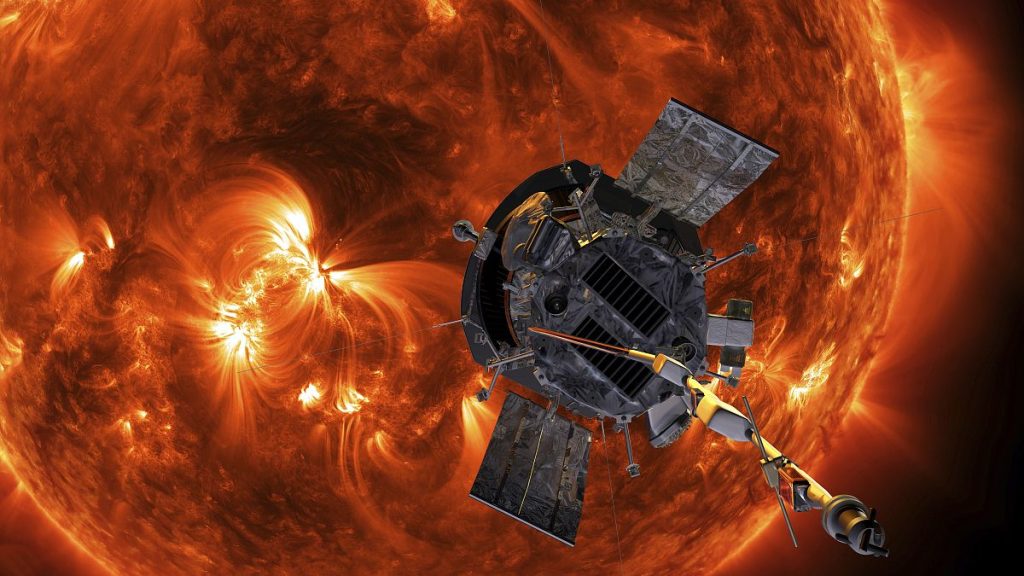Paragraph 1: A Historic Close Encounter with the Sun
NASA’s Parker Solar Probe has achieved a monumental feat in space exploration, making the closest-ever approach to the Sun. Earlier this week, the spacecraft ventured to a record-breaking distance of approximately 6 million kilometers from the Sun’s surface, braving the intense heat and radiation of our solar system’s central star. This daring maneuver marks a significant milestone in humanity’s quest to understand the Sun’s complex dynamics and its influence on Earth and the surrounding space environment.
Paragraph 2: Surviving the Scorching Solar Embrace
The Parker Solar Probe’s close encounter with the Sun was a high-stakes endeavor, as the spacecraft had to withstand extreme temperatures and radiation levels. After passing through the Sun’s corona, its outer atmosphere, NASA received confirmation of the probe’s successful survival. This achievement is a testament to the ingenuity of the engineers and scientists who designed and built Parker, equipping it with cutting-edge technology to endure the Sun’s scorching embrace.
Paragraph 3: Unveiling the Sun’s Mysteries
The Parker Solar Probe’s primary mission is to unravel the long-standing mysteries surrounding the Sun’s behavior. One of the central puzzles scientists hope to solve is the counterintuitive temperature difference between the Sun’s surface and its outer atmosphere. While the Sun’s surface burns at around 5,500 degrees Celsius, its corona reaches temperatures millions of degrees hotter. This discrepancy has baffled scientists for decades, and Parker’s close-up observations are expected to provide valuable data to help explain this phenomenon.
Paragraph 4: Exploring the Solar Wind’s Origins
Another key objective of the Parker Solar Probe is to investigate the origins and dynamics of the solar wind. This continuous stream of charged particles emanating from the Sun travels at supersonic speeds, impacting Earth’s magnetic field and influencing space weather. Understanding the mechanisms driving the solar wind is crucial for predicting and mitigating its effects on our planet’s technological infrastructure, including satellites, power grids, and communication systems.
Paragraph 5: A Technological Marvel in the Service of Science
The Parker Solar Probe is a marvel of human engineering, representing the pinnacle of spacecraft design and technology. Traveling at speeds exceeding 690,000 kilometers per hour during its closest approach to the Sun, Parker is the fastest spacecraft ever built. Its heat shield, composed of advanced materials, can withstand temperatures up to 1,370 degrees Celsius, protecting the sensitive instruments on board from the Sun’s intense heat.
Paragraph 6: Living with a Star: Understanding Our Solar Neighborhood
The Parker Solar Probe mission is part of NASA’s "Living With a Star" program, which aims to deepen our understanding of the Sun-Earth system and its impact on life and society. By studying the Sun’s dynamic processes up close, scientists can gain valuable insights into the complex interactions between our star and its planetary neighbors. This knowledge is crucial for protecting our planet from the Sun’s potentially harmful effects and developing strategies for harnessing its energy for sustainable human development. The data collected by Parker will contribute significantly to our understanding of space weather, helping us predict and prepare for solar storms that can disrupt our technological infrastructure and potentially endanger astronauts in space.














